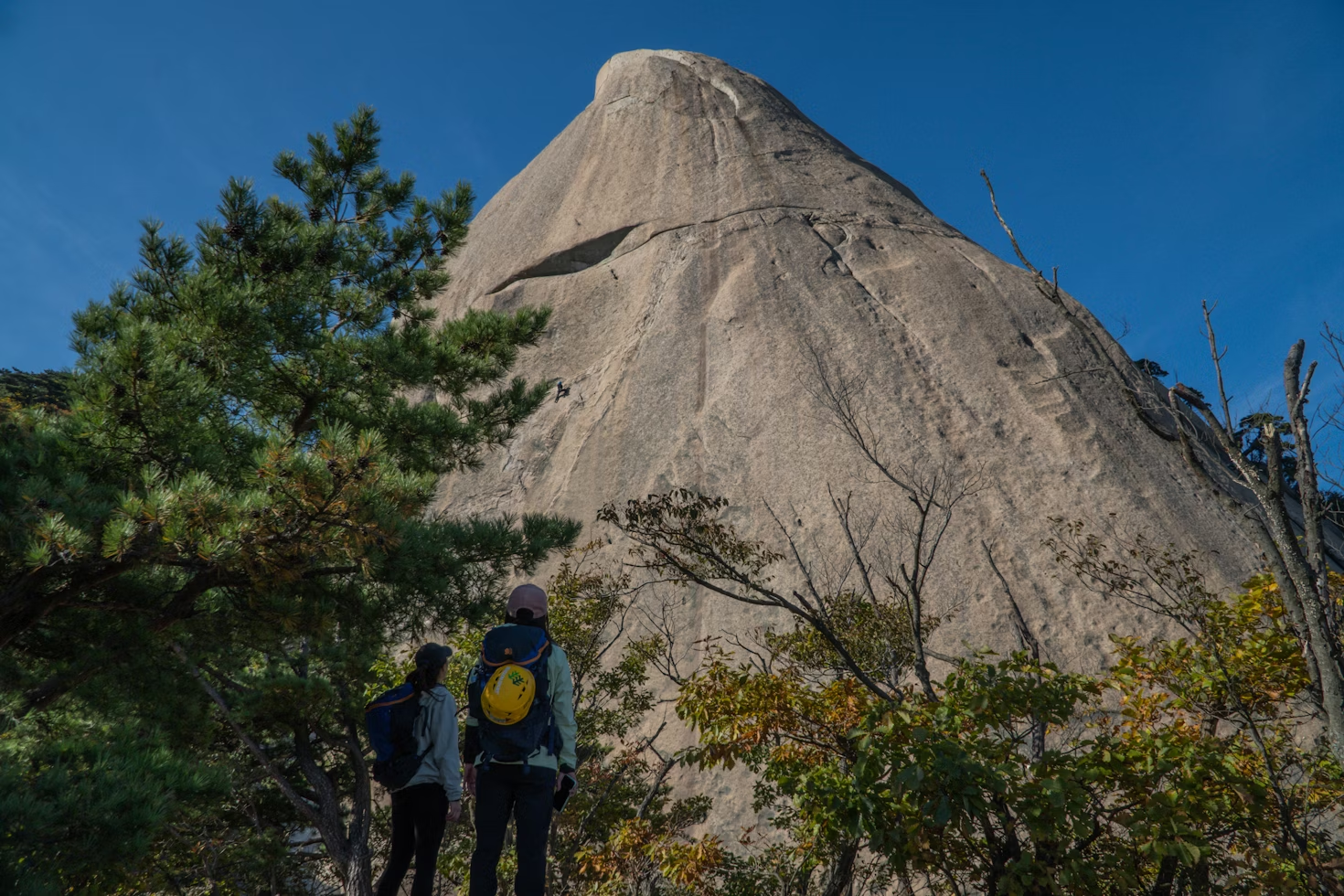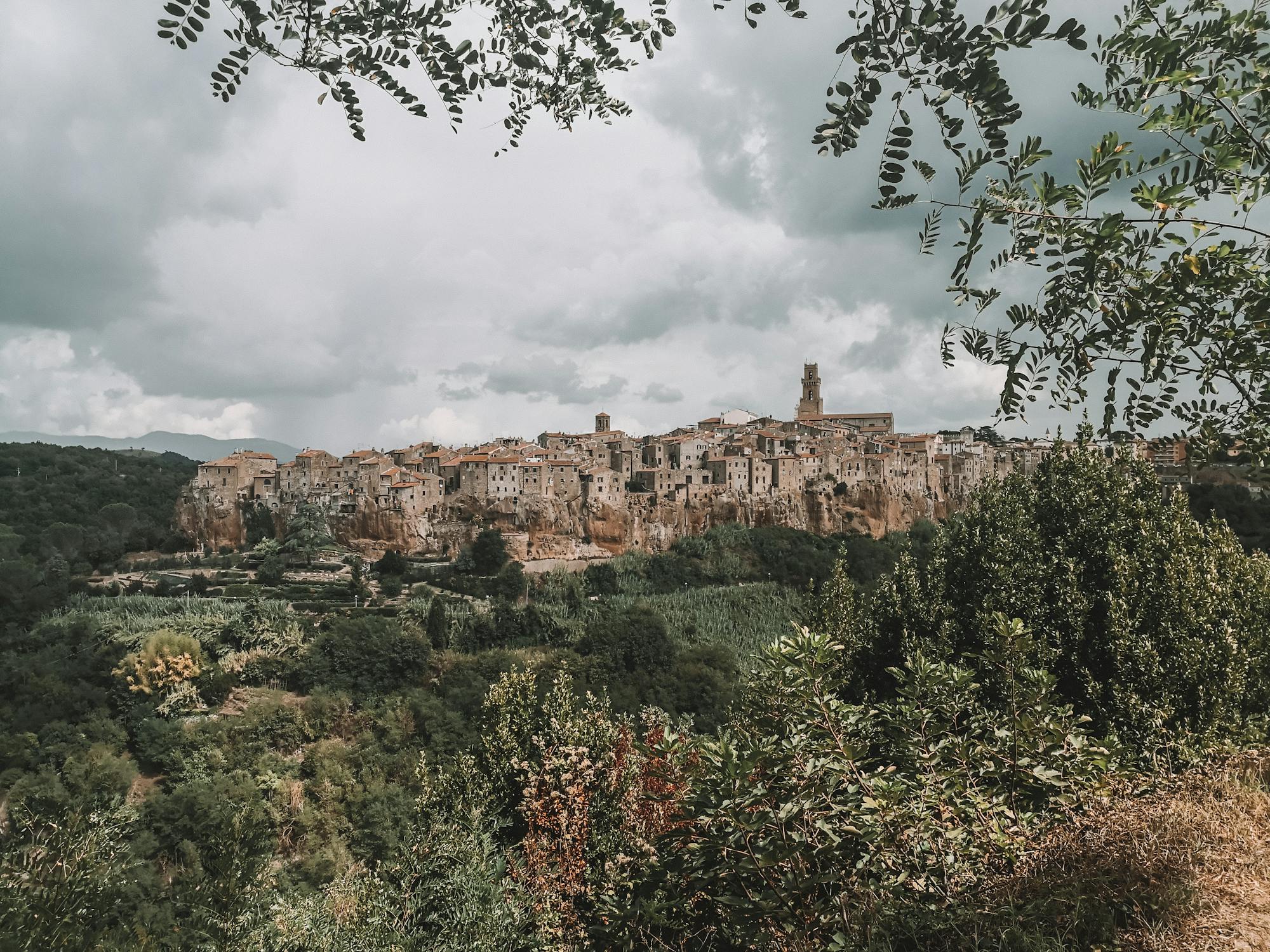South Korea, a land of breathtaking natural beauty, boasts a diverse tapestry of landscapes, from rugged mountain peaks and verdant forests to serene coastal paths and tranquil valleys. For outdoor enthusiasts, this translates into a wealth of hiking trails catering to all levels of experience, from those taking their first steps on a trail to seasoned adventurers seeking challenging ascents. Whether you are drawn to panoramic vistas, the tranquility of nature, or the invigorating physical challenge, Korea’s trails offer an unforgettable escape.
This article will delve into some of the country’s best hiking trails, highlighting options perfect for both beginners eager to explore and experts seeking their next thrilling conquest.
Gentle Introductions: Beginner-Friendly Hikes
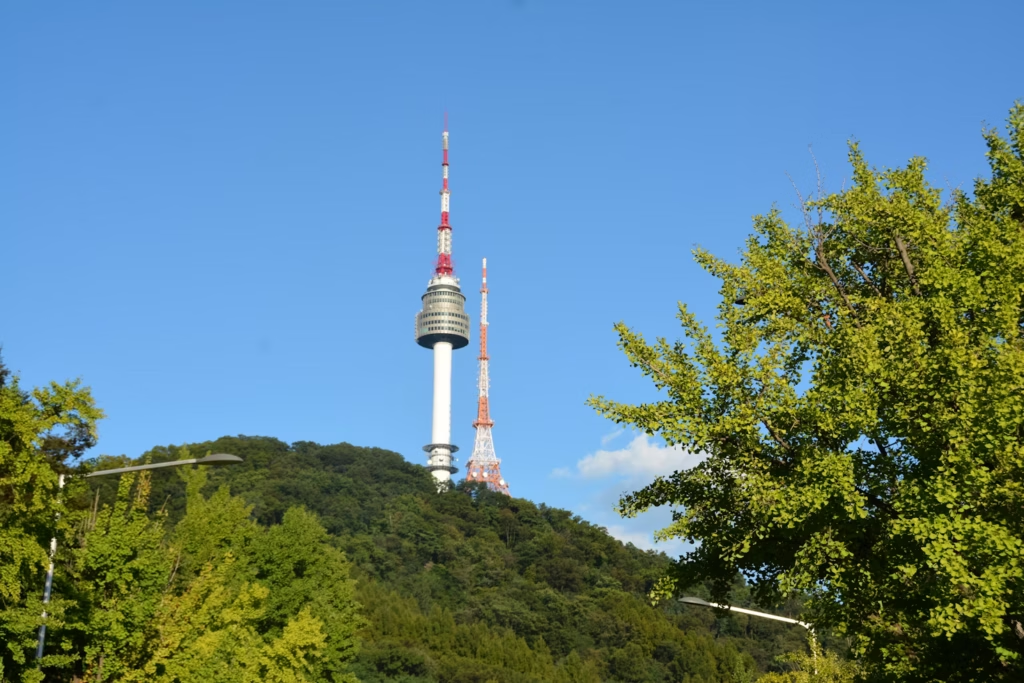
For those new to hiking or looking for a more leisurely experience, Korea offers numerous trails that are relatively flat, well-maintained, and provide stunning scenery without requiring extreme physical effort. These trails, often highlighted in any good hiking guide, wind through picturesque parks, follow tranquil rivers, or climb gently sloping hills. They’re perfect for beginners to build confidence, soak in the natural beauty of Korea, and enjoy a rewarding outdoor adventure without feeling overwhelmed.
Seoul’s Accessible Beauty: Namsan Park Trails
One excellent option for beginners is the trails within Namsan Park, located in the heart of Seoul. The park features several well-paved and clearly marked paths, making it an accessible choice for those new to hiking. One of the highlights is the hike to N Seoul Tower, which offers a gradual incline and stunning viewpoints overlooking the sprawling cityscape.
In addition to the breathtaking views, the trails are dotted with historical sites and cultural attractions, adding depth to the experience. Whether you’re looking to enjoy nature or explore a bit of Seoul’s history, Namsan Park provides a well-rounded adventure for novice hikers.
Coastal Serenity: Easier Sections of Jeju Olle Trail
Another fantastic beginner-friendly option is the Jeju Olle Trail’s easier sections, especially those along the coastline. These trails are mostly flat and provide breathtaking views of the volcanic coastline, quaint villages, and the sparkling azure sea. They are perfect for those looking to enjoy the natural beauty of Jeju without tackling challenging terrain.
Sections like Route 14-1, which winds along the lower slopes of Hallasan Mountain, offer a gentle introduction to the island’s distinctive volcanic landscape. This route showcases Jeju’s unique geology while remaining accessible to hikers of all skill levels, making it an ideal choice for beginners.
Stepping Up the Challenge: Intermediate Hikes
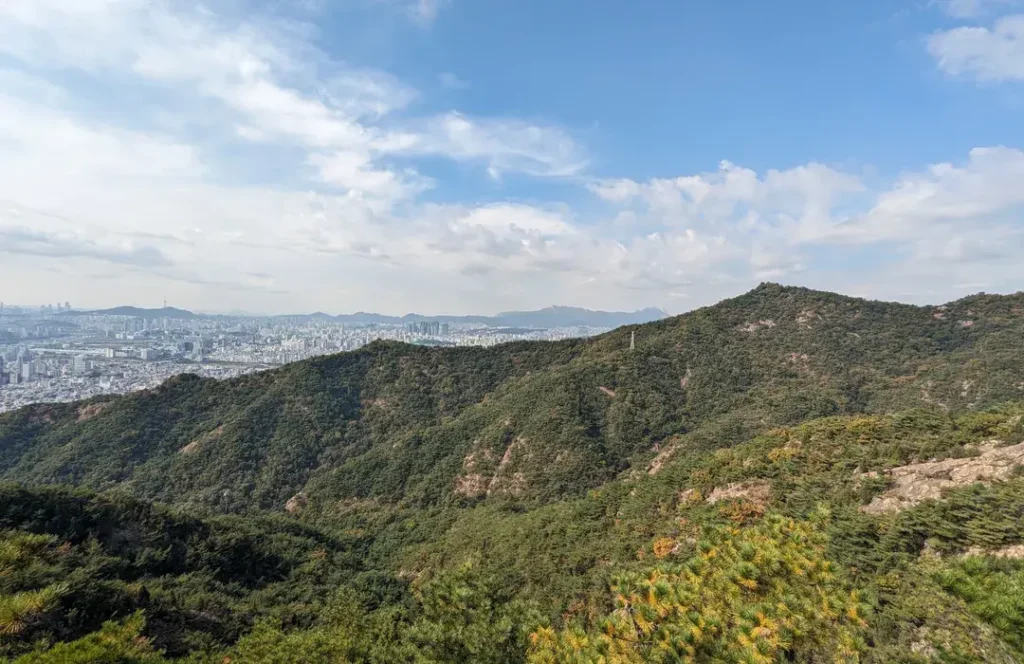
As hikers gain experience and seek a more substantial physical challenge and more immersive natural experiences, Korea offers a plethora of intermediate-level trails. These hikes typically involve moderate inclines and varied terrain and may require a slightly higher level of fitness. They often lead to more secluded areas, offering a deeper connection with nature and rewarding hikers with breathtaking views that require a bit more effort to reach. These trails strike a perfect balance between accessibility and adventure, appealing to those looking to push their boundaries without tackling truly demanding ascents.
Riverside Views and Historical Sites: Achasan Mountain
Achasan Mountain in Seoul offers an excellent intermediate hiking experience, perfect for those looking to enjoy nature without an overly strenuous challenge. The trails feature a mix of gentle slopes and steeper sections, providing a satisfying workout while still being accessible to most hikers. The reward at the top is a stunning view of the Han River and Seoul’s vibrant skyline, making the effort well worth it.
The hike is dotted with historical fortresses, adding to the experience and giving visitors a chance to explore the area’s cultural heritage. These landmarks provide a unique blend of natural beauty and history, making Achasan a must-visit spot for hikers and cultural enthusiasts alike.
Mountain Vistas and Lake Scenery: Woraksan National Park (Manusu Peak)
Further afield, Woraksan National Park in Chungcheongbuk-do province is a must-visit for hiking enthusiasts. The park is renowned for its dramatic peaks and breathtaking natural scenery, making it a standout destination for nature lovers. One of its highlights is the Manusu Peak course, a trail that offers a more challenging climb with rocky sections for adventurous hikers.
This trail rewards your efforts with stunning vistas of the surrounding mountain ranges and tranquil lakes, creating a truly immersive mountain hiking experience. For those looking to step up their hiking game, Woraksan National Park delivers both the challenge and the beauty that make it an unforgettable destination.
Conquering Peaks: Expert-Level Hikes
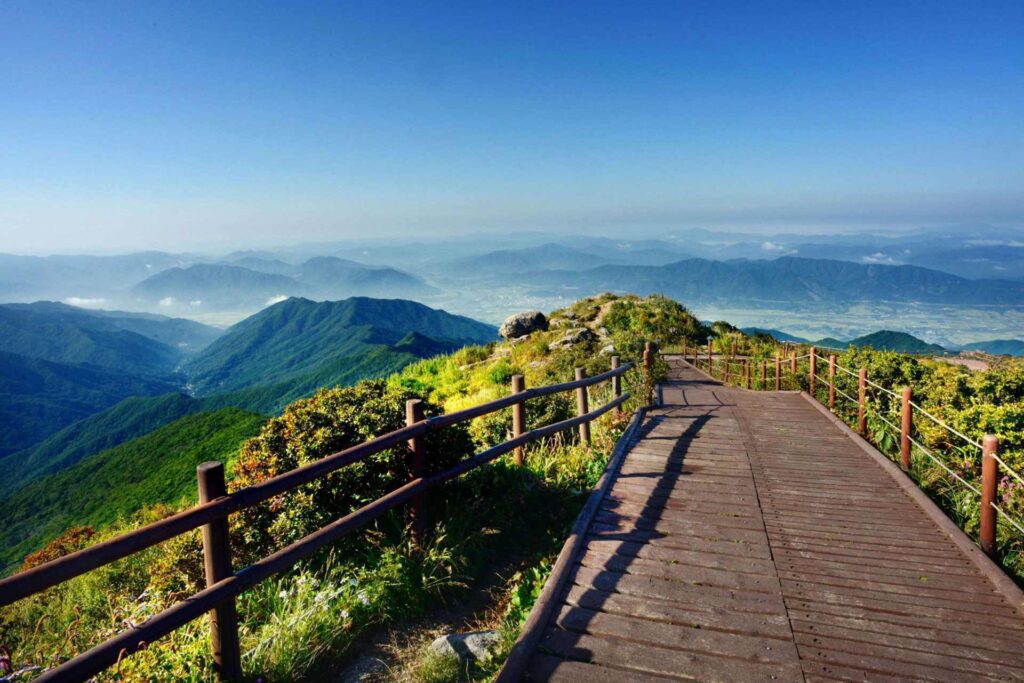
For seasoned hikers and adventurers seeking the ultimate challenge, Korea boasts several demanding trails that traverse rugged mountain terrain, involve steep ascents, and often require scrambling over rocks. These expert-level hikes reward perseverance with unparalleled panoramic views, a profound sense of accomplishment, and an intimate encounter with Korea’s most dramatic natural landscapes. Due to their difficulty and potential for challenging conditions, these trails often require excellent physical fitness, proper gear, and careful planning.
Granite Majesty: Seoraksan National Park (Daecheongbong Peak)
The iconic Seoraksan National Park is a paradise for expert hikers, featuring a variety of challenging trails that weave through its rugged granite peaks. Known for its natural beauty, the park offers an unforgettable experience for those seeking adventure in the great outdoors.
One of the most demanding yet rewarding hikes is the trek to Daecheongbong Peak, the park’s highest point. This multi-day journey takes you through rocky ridges and serene alpine forests and offers breathtaking vistas at every turn, making the effort well worth it.
Traversing the Roof of Korea: Jirisan National Park (Main Ridge)
Another formidable challenge awaits in Jirisan National Park, the largest mountain park in Korea. The main ridge traverse, which often spans several days, presents hikers with significant elevation changes. This trek requires both physical endurance and strong navigation skills, making it a demanding adventure even for experienced hikers.
Despite the difficulty, the rewards are well worth the effort. The trail offers sweeping views of rolling mountain ranges and a chance to immerse yourself in the park’s diverse ecosystems. For those seeking a true connection with nature, Jirisan’s rugged beauty and rich biodiversity provide an unforgettable experience.
Urban Mountaineering: Bukhansan National Park (Baegundae Peak)
Finally, the challenging trails of Bukhansan National Park in Seoul, such as the Baegundae Peak course, provide a demanding adventure for experienced hikers. This trail includes steep, rocky sections that require a good level of fitness, careful footing, and determination to conquer. It’s not a path for the faint-hearted but rather for those seeking a true test of their endurance.
The reward for this strenuous effort is the breathtaking panoramic views of Seoul from the summit. Standing at the top, hikers are treated to a stunning blend of urban skyline and natural beauty, making the climb a memorable experience. For those prepared to take on the challenge, Bukhansan offers an unforgettable journey through one of Seoul’s most iconic landscapes.
Essential Tips for Hiking in Korea
Hiking in Korea offers breathtaking landscapes and unforgettable experiences, but proper preparation is key to ensuring a safe and enjoyable trip. Here’s a breakdown of must-know tips to help you get ready for your adventure:
- Wear Proper Footwear: Invest in quality hiking shoes with good ankle support and solid traction to handle Korea’s varied terrains, from rocky mountains to forest trails. Proper footwear not only ensures comfort but also reduces the risk of slips and injuries.
- Dress in Layers: Korea’s weather can change quickly, especially in mountainous areas. Layering your clothing allows you to adjust for temperature changes, staying warm in the morning chill or shedding layers during midday heat. Don’t forget a waterproof jacket in case of sudden rain.
- Stay Hydrated and Energized: Always carry enough water to stay hydrated throughout your hike, especially during longer trails or in warmer weather. Pack energy-rich snacks like nuts, protein bars, or dried fruit to keep your energy levels up and prevent fatigue.
- Check the Weather: Always look up the weather forecast before heading out. Sudden rain, high winds, or extreme heat can turn a pleasant hike into a challenging or even dangerous situation. Plan accordingly and be prepared for unexpected changes.
- Let Someone Know Your Plans: Share your itinerary, including the trail you’ll be hiking and your expected return time, with a friend, family member, or local authorities. This ensures someone knows where you are in case of emergencies or delays.
- Use Hiking Apps and Maps: Download reliable navigation tools or carry physical maps to guide you. Apps like Naver Maps or AllTrails can help you stay on track, find nearby attractions, and avoid getting lost, especially on less familiar trails.
- Stay on Marked Trails: Always stick to designated paths to protect the environment, avoid getting lost, and reduce the risk of accidents. Straying from marked trails can damage ecosystems and disturb wildlife.
- Pack Out Your Trash: Help preserve Korea’s stunning natural beauty by leaving no trace of your visit. Always pack out all trash, including food wrappers, tissues, and any biodegradable waste, to keep the environment clean.
- Follow Park Regulations: Familiarize yourself with the rules of the park or trail you’re visiting, such as restricted areas, fire regulations, or pet policies. Respecting these rules ensures a safe, enjoyable hike for everyone and helps protect the natural habitat.
- Carry Basic Safety Gear: In addition to essentials like water and snacks, pack a first aid kit, a flashlight or headlamp, and a whistle for emergencies. These small items can make a big difference if you find yourself in an unexpected situation.
- Start Early: Begin your hike early in the day to allow plenty of daylight for your trek. This also gives you extra time in case the trail takes longer than expected or you want to enjoy the scenic views.
By keeping these tips in mind, you’ll be well-prepared for exploring Korea’s incredible hiking trails with confidence and respect for nature.
Final Thoughts
From gentle strolls through urban parks to challenging ascents of majestic peaks, South Korea offers a hiking experience for everyone. The diverse terrain and breathtaking scenery provide a compelling invitation to explore the country’s natural wonders on foot.
Whether you are a beginner taking your first steps or an experienced hiker seeking your next great adventure, the trails of Korea promise unforgettable journeys, rewarding views, and a deep connection with the stunning landscapes of this captivating nation. So, lace up your boots, embrace the call of the mountains and forests, and discover the unparalleled beauty that awaits you on Korea’s remarkable hiking trails.

